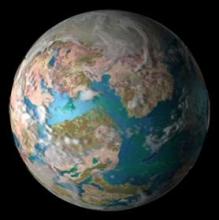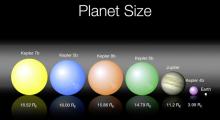I have a real interest in life that exists outside of the Earth and I guess you could have gleaned that from the articles that I have written on this blog. This post will continue on that trend.
Most of the planets that have been discovered outside of our Solar System have been gas giants. The technology that we have right now allows us only to be able to easily detect these extrasolar planets. Doppler spectroscopy is the method used and it works by observing Doppler shifts in the star’s spectrum which the planet orbits.
There have been a lot of Super-Earths found and especially more so this year. A list of 1235 extrasolar planet candidates of which 68 were roughly “Earth-size” and 288 could be ”super-Earth-size” was released by the Kepler Space Observatory Mission Team.
Kepler is a NASA spacecraft equipped with a space observatory designed to discover Earth-like planets orbiting other stars. The famous astronomer and a true inspiration for me Seth Shostak believes that by looking at the latest Kepler findings there are "at least 30,000 of these habitable worlds within a thousand light-years of Earth.”[1] Furthermore, the Kepler Team has estimated "at least 50 billion planets in the Milky Way" of which "at least 500 million" are in the habitable zone.[2]
Just recently this summer a possibly habitable Super-Earth called HD 85512 b was identified by utilizing the European Southern Observatory’s (ESO) world-leading exoplanet hunter HARPS. This HARPS planet finder has also found 82 G. Eridani which is a three super-Earth system. It is speculated that HD 85512 b would be habitable if it shows cloud cover in excess of 50 percent. The summer was also full of new discoveries of exoplanets with 41 being announced with 10 of them being super-Earths.[3]

